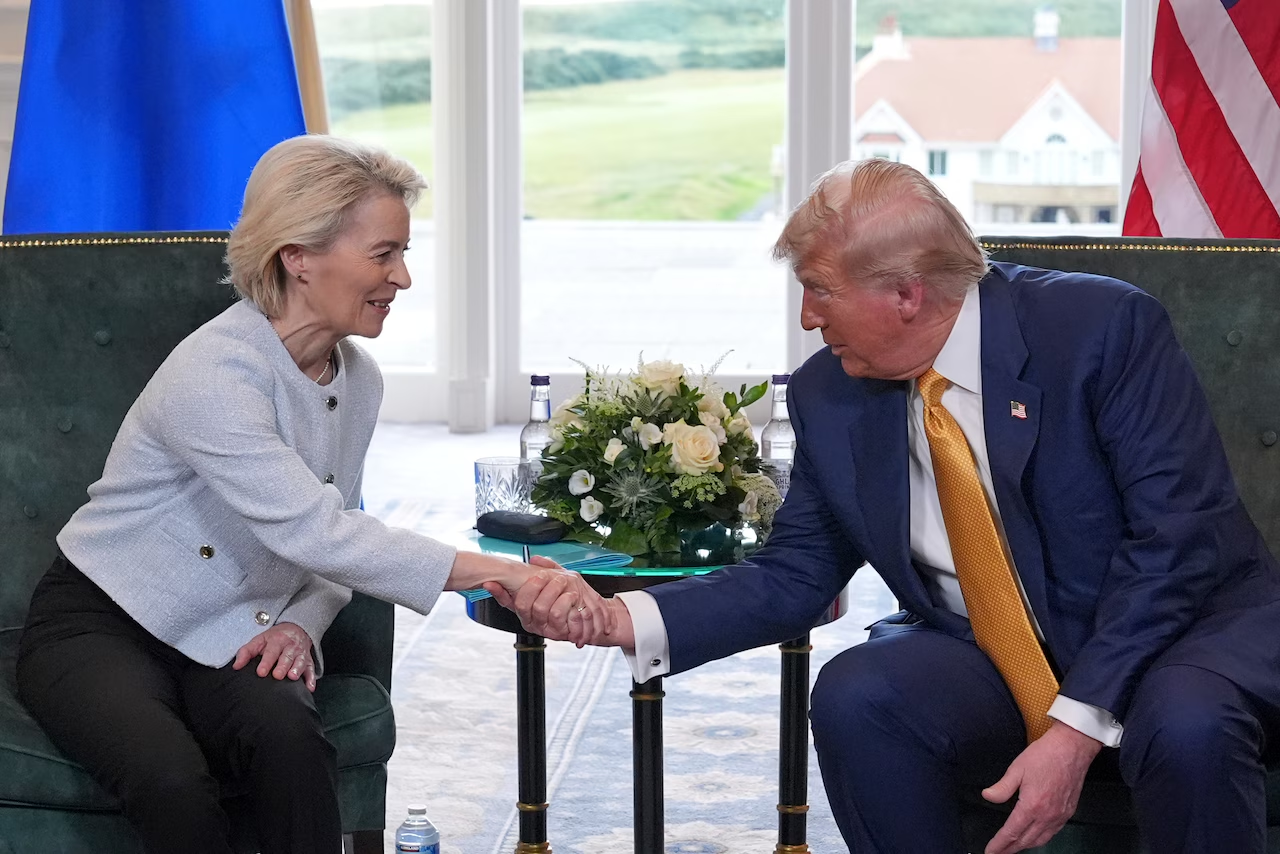Transatlantic Trade Deal Establishes 15% Tariff to Ease Tensions
The United States and the European Union have finalized a broad framework trade agreement that sets a flat 15% import tariff on a wide range of EU goods. This move effectively averts a major trade war and stabilizes an increasingly strained transatlantic economic relationship.
The negotiations, concluded in Turnberry, Scotland, between U.S. President Donald Trump and European Commission President Ursula von der Leyen, reflect months of high-stakes diplomacy following escalating threats of punitive tariffs. The agreement marks a significant diplomatic victory for both sides, as it replaces an unpredictable climate of retaliatory measures with a structured and enforceable framework.
New Tariff Rules and Industrial Consequences
Under the terms of the deal, the United States will impose a 15% tariff on most EU exports, including automobiles, household appliances, and selected industrial goods. While this rate is not negligible, it represents a significant step back from earlier U.S. proposals that floated tariffs ranging from 27.5% to 50% on specific categories. The automotive sector, in particular, avoided severe disruption, a point emphasized by German and Italian officials during the post-deal briefing.
Crucially, some strategic sectors are exempt under a “zero-for-zero” clause, meaning that items like semiconductor components, generic pharmaceuticals, green hydrogen technology, and precision medical devices will be traded without additional duties. However, existing 50% tariffs on steel and aluminum remain in place, with negotiators agreeing to pursue a new quota-based system to manage these sectors long-term.
The U.S. also committed to updating its customs procedures for high-volume EU imports, which could reduce administrative barriers for European exporters. These reforms align with existing guidance from the U.S. International Trade Administration.
European Concessions and Economic Outcomes
In exchange, the EU pledged to ramp up energy and defense purchases from the U.S., totaling an estimated $750 billion over the next decade. This includes expanded contracts for liquefied natural gas, cybersecurity tools, and military hardware. Additionally, EU institutions agreed to inject approximately $600 billion in direct investments into U.S. infrastructure and advanced manufacturing projects—a commitment expected to create tens of thousands of jobs, particularly in the U.S. Midwest and South.
These terms closely mirror those found in previous bilateral economic security pacts, including the recent U.S.–Japan trade compact. The European Investment Bank (EIB) is expected to play a central role in channeling capital toward U.S.-based green technology hubs and industrial retrofits.
Financial markets responded favorably. The euro gained ground against the dollar, and global equity markets rose, reflecting reduced risk of trade-related instability. Analysts at Bloomberg noted a spike in investor confidence across automotive and semiconductor sectors, especially in Germany, France, and the Netherlands.
Diverging Reactions Inside the EU
Not all EU member states view the agreement uniformly. While Germany and Italy praised the deal as a “pragmatic solution” to a looming crisis, France expressed stark opposition. French Prime Minister François Bayrou condemned the accord as a “capitulation” that jeopardizes European sovereignty. He urged the EU to activate its Anti-Coercion Instrument to examine whether Washington exerted undue pressure during the negotiations.
Poland and the Baltic states voiced more measured support, highlighting the agreement’s energy provisions and the reduced risk of transatlantic fragmentation. In Brussels, concerns persist about enforcement and whether future U.S. administrations will honor the deal.
Meanwhile, European trade associations such as the European Automobile Manufacturers’ Association are already lobbying for further exemptions and harmonization of safety and environmental standards to minimize disruptions and compliance costs.
Looking Ahead
While the agreement avoids immediate escalation, it does not resolve long-term questions about market access, supply chain resilience, and regulatory alignment. Many industry observers note that the framework may serve as a transitional mechanism rather than a permanent fix. Its success will likely depend on the establishment of monitoring bodies, timely dispute resolution mechanisms, and continued investment in bilateral communication.
The U.S.–EU tariff deal signals a renewed attempt at strategic economic coordination between two of the world’s largest markets. However, the real test will come not from signatures but from implementation.



